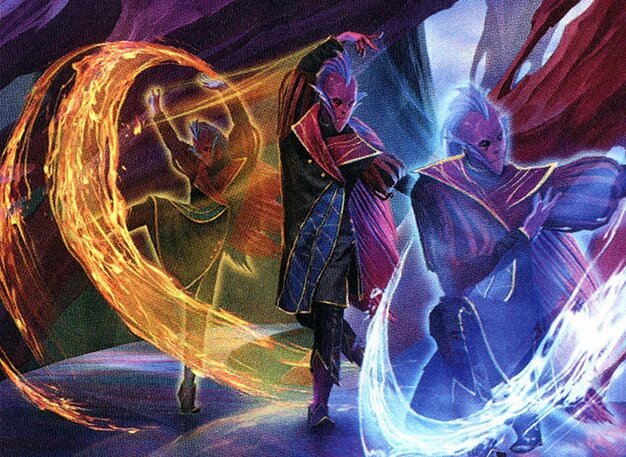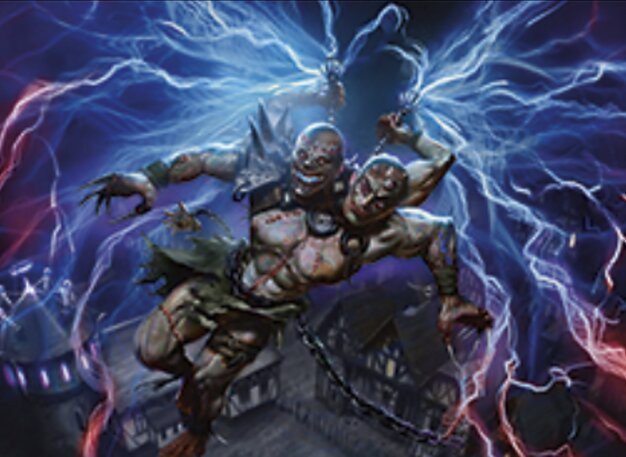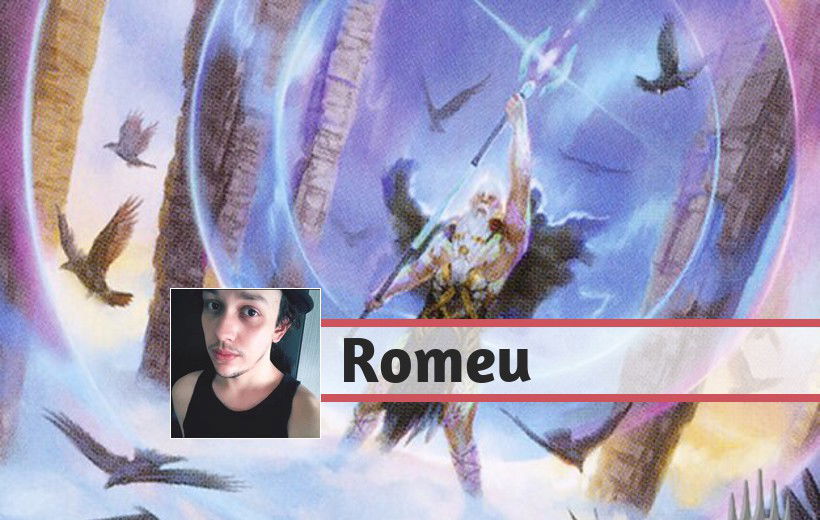Today, we'll delve deeper into the deck played by the new World Champion, Yuta Takahashi, who finished undefeated in the standard portion with an 11-0 record after opening 0-3 in the draft.
Since the September rotation with Innistrad: Midnight Hunt (MID)'s arrival, this has been my favorite archetype in Standard because it can adapt to win any match, whether against aggro, control, midrange or combo.
Why Izzet Dragons in this championship
Ad
As it was 16-player tournament, the metagame was very restricted and the focus was to win this specific field. Grixis Turns is the best example of this, a deck that is not good to play on the Arena ladder, but it was well-chosen for the Worlds because it has more favorable matches against aggro decks than the Izzet version and even has good discard spells against Izzet Turns.
We saw some Galvanic Iteration plays copying Go Blank or Duress and decimating the opponent's hand that, despite playing with a very recursive deck, losing 2 or 4 cards in your hand is extremely punishing.
Let's get into the list, and I'll try to explain as best I can on how each card works on this list, although I can't do justice to the new champion.
Understanding the Izzet Dragons
First, the deck's core is:

These cards are what characterize this archetype. Goldspan Dragon has the potential to turn the game rapidly and can protect itself with counterspells by generating treasure tokens and is the main card in the deck.
The extra turn has been discussed for a few weeks as the best card in the format, including being subject to banning, if it depends on the players. We all know that playing 2 or 3 turns in a row is extremely relevant and breaks the game dynamic, especially when in addition to playing another turn, we create 2 1/1 tokens with flying.
Expressive Iteration is the card that gives the deck consistency and arguably one of the strongest cards released since Strixhaven. Excellent when we cast it turn 3 to develop the game, excellent in late game for digging threats and/or answers in the deck, the card is outstanding on its own, and we could make an article just for it. The important thing is to keep in mind that it brings a lot of consistency to the deck and allows us to almost always have some necessary answer or even more card advantage.
Memory Deluge is an excellent cantrip, what surprised me was the use of 4 copies in the main deck by Yuta Takahashi. I believe that expecting a field full of slow blue decks, this card is essential because it's a bit problematic to spend a counter against it, but we don't want opponents to look at 4 or 7 cards and put 2 into their hand. Another pillar of this deck's consistency that digs too well for what we need, and the fact that it has flashback is exactly what makes it not so interesting to use counterspells on.
The archetype is already well known, and what makes this list different from others (besides that only this one was world champion) are some very well-thought-out techs for the tournament. In the Arena ladder and in tournaments, we see many copies of Burning Hands in the main deck because they are environments with infested with Mono Green and some Gruul, but in the world we had 3 Mono Green and 1 Gruul with splash for Negate.
Takahashi preferred 2 copies of Thundering Rebuke to target other Goldspan Dragon, Smoldering Egg, Old-Growth Troll and Lier, Disciple of the Drowned. The card had been used on the sideboard, so what Takahashi did was to pass the Burning Hands to the sideboard and Rebuke to the main deck.
Ad
The cards that were being little used or did not see play in the deck are:

Let's understand the purpose of each of these cards on Takahashi's list.
Spikefield is a great cheap removal for cards like Magda, Brazen Outlaw, Malevolent Hermit // Benevolent Geist, Spikefield's main target, and Lotus Cobra that was used by Seth Manfield in his Mono Green.
Fading Hope is a good tempo play against some aggro decks, especially Mono Green, which can take 2-for-1 when removing or pumping a creature. Tokens created by cards like Wrenn and Seven and Ranger Class are also great targets for the new bounce.
I always liked Jwari Disruption for the versatility of being a land when needed or a counter when we have enough lands and I believe it has room in that deck.
Those who watched the top 4 of the Worlds, realized how good this card can be, Depraz himself must have some nightmares about it after the final games because the way Jwari breaks the curve is very efficient. It's a card that delays your opponent's game by one turn for two mana, and besides, people rarely play around it unless they've seen it in another game.
Dissipate is a card to target decks with Lier, Disciple of the Drowned, to counter spells before it enters the field. This is an interesting choice to use in Deluge to exile it or in a Hermit, that is, cards that can be cast from the graveyard. There were few times we saw the card being used, but its function was very specific, and I don't believe it is a good counter for more open tournaments.

Divide By Zero has been used a lot on Izzet and Grixis Turns, but not so much on Dragons, and I came to like it after a period of reticence about its efficiency and which lessons to use, which reduces slots to focus on some specific match. However, the 2 lessons in the sideboard have well-defined goals regarding the moments of the game, and cycling a card from the hand can be very useful, such as when Stráský played to the out of a Spikefield by cycling a card with Divide By Zero and found the removal.
This is the typical Tempo play that is very annoying to take because it is not a counter, but it can act as such, like Aether Gust. It also circumvents restrictions made by Lier, Hermit, Toski, Bearer of Secrets and Inferno of the Star Mounts. As for Worlds' case, it was just that, to be able to get around Lier and Hermit, and I wouldn't be surprised if we saw it being more played from now on.

The rest of the main deck is no mystery, it's a very consolidated base, even in numbers. Smoldering Egg turned out to be one of the best cards in Midnight Hunt for being able to hold the early game well and become a strong threat when transforming into a dragon, quickly closing a game.
Ad
Prismari Command is a good card against decks that run Esika's Chariot, so 1 or 2 copies max. The counterspells package is supplemented with Saw it Coming and Negate. In a metagame with several Lier decks, it's not really worth using too many counters, and we saw that half of the Worlds' lists were Epiphany with Lier. In a more open field, more copies of Saw It Coming are good, especially expecting many Dragon mirrors. Shatterskull Smashing // Shatterskull, the Hammer Pass is a pretty hardcore late game removal and excellent mana sink.
Sideboard Choices
The sideboard used by Takahashi didn't present innovations in relation to other lists, except for the two lessons, since it has 2 Divide By Zero on maindeck. Even the two lessons, as said before, don't seem to interfere much with the sideboard in matter of taking 2 slots because both Environmental Sciences and Mascot Exhibition can be useful in any match to make sure you hit your land drops or pressure the board with tokens.

Malevolent Hermit // Benevolent Geist is probably the best post-sideboard card on blue deck mirrors that play backwards. I played and saw many games like this being defined by whoever has more Hermit on the board as soon as possible because, in addition to pressing with 2 damage per turn, it prevents some important spells from resolving without giving an opportunity to respond, as it is an activated ability and not a spell
The back side, beats 2 with evasion and doesn't allow your noncreature spells to be countered, meaning you don't need to be afraid to cast an extra turn, Deluge or any other instant or sorcery that develops/wins the game. Expecting many decks with Epiphany, 4 copies is not too much!
The solitary counter, Test of Talents, is excellent on Izzet Dragons mirrors and other decks with Epiphany, in case Lier and/or Geist are not on the board. Being able to exile all copies of Deluge, Galvanic Iteration, Expressive Iteration or extra turn for just 2 mana was enough for this counter to gain a slot.
As for the anti-aggro package, we have a lot more options with many quick removals and one more copy of Fading Hope to give the deck time until its impactful plays are available.
Cinderclasm is good against small creature decks like Gruul and Mono White, Burning Hands is the main answer against green decks and can be useful against Mono White because it kills almost all of its creatures, and the second copy of Prismari Command at 75 is another good choice against Chariot decks.
Of all the removals, the only one that is not seen as often, and I would like to draw attention to it, is Heated Debate.

In addition to being good against creature decks, it excels on dragon mirrors and Lier decks because it can't be countered and kills Goldspan, Lier, and Egg. I only one copy instead of two is because Yuta already had 4 Hermits for these matches, but expect to see more of this removal in the coming weeks.
Ad
Conclusion
Hope you enjoyed this review of Yuta Takahashi, Magic's new World Champion's decklist.
Any questions, comments or feedback I'm available in the comments below.









— Comments0
Be the first to comment